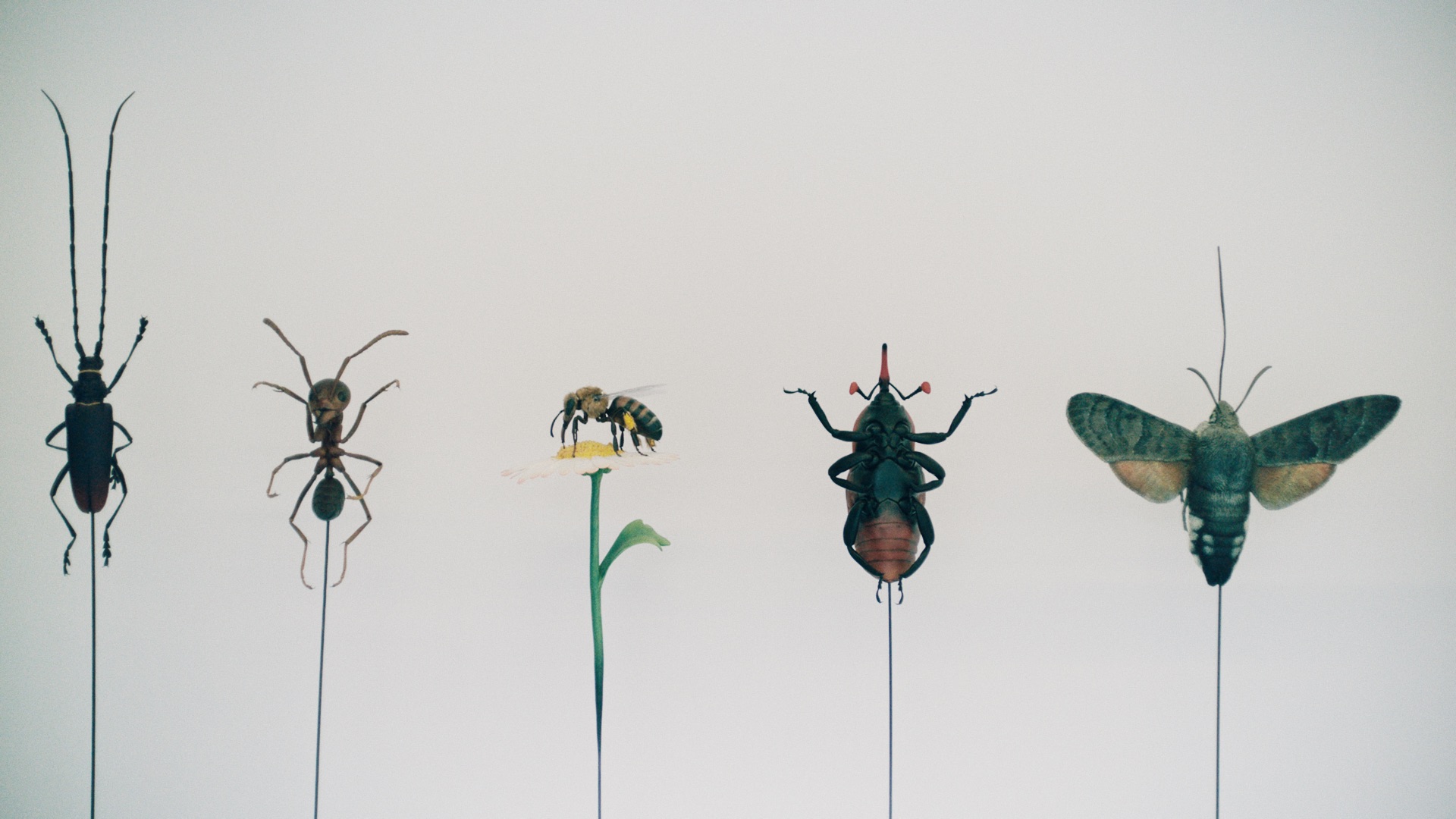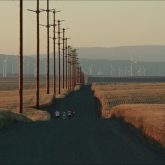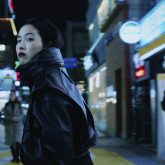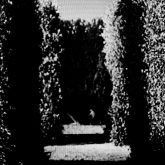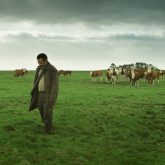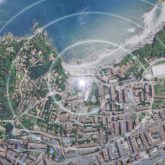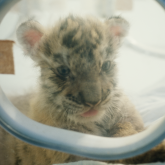Feeling well, feeling low, healing. Three concepts that often seem vague, abstract. But it happens: something shifts inside, and the landscape around you changes shape. The city becomes sharper—or more blurred. Sounds may seem distant or deafening. Faces, signs, the moon: they light up and go dark only if the same thing is happening within you. It’s a matter of perception. Of brief moments that call everything into question. In life, as in cinema, there’s always someone wandering through a metropolis in a daydream, someone who gets lost under the sun and finds themselves again at night, on an island far from home.
In this list of ten films—features, documentaries, and shorts—precisely this tension between lives and places takes center stage. What unites them is always a landscape that watches those who move through it, an idea of identity that breaks apart and reassembles from within. Bodies seek meaning, drifting through the world’s most remote and crowded places, holding onto the hope that the place they eventually reach will reflect the one they’ve carried within all along.
Daydreaming so vividly about our Spanish holidays, by Christian Avilés (2022)
The glow of the sky is nothing but an image printed on a poster stuck to the ceiling of a dark teenage bedroom. Through his headphones, a guy listens to white noise. Outside the window, the city skyline is swallowed by fog. He feels no hunger and finds no words to connect with his mother. It’s summer—but not really. Not outside, and even less so inside. “Everything’s grey and sad, as always”. Then, a gift: a ticket to Mallorca. Christian Avilés’ ambitious short stages the sun cult of British teens, afflicted by a vitamin D deficiency that seems to explain their melancholy. Shot on 16mm, the film lights up at just the right moment, glowing and contrast-free. You can’t hold the sun inside—you have to chase it. And so begins a carousel of images: bold 1970s hotel signs, skin reddening in the poolside sun, groups of friends, silence, pain, and shared euphoria. It’s a portrait of youth yearning to soak up sunlight forever, yet forced to confront the darkness.
“Una teoria che ho sognato a Londra” by Fulvio Risuleo (2025)
A man wanders the streets of metropolitan London, observing its spaces and the people who pass through them. The imagery is grainy and desolate. Buildings rise into a leaden sky, like models from a dystopian film set. We are caught in a liminal moment: “In the morning, the sun enters your eyes. It doesn’t fully wake you”. In this drowsy, liminal state, the protagonist begins to navigate the chaos triggered by a dream. His silhouette emerges—first framed by a window, then absorbed into the crowd. The director juxtaposes the flat surfaces of the buildings with the curved surfaces of iron statues and masks hung on walls. The recurring motif of circles and spheres—and the urge to rationalize them—leads us back to something deeply human. It’s reflected in the smooth, rounded heads of bald passersby and the shared sorrow and pain that unite them. Then suddenly, a sharp jolt to the head: the film shifts focus to inanimate details—wardrobe knobs, a shower curtain, a streetlight, and finally, a pillow. We return to the space where imagination takes over. Dreams are dreams—not real stories. The thought loops become an echo and blend with the metallic soundtrack by Virginia Quaranta.
Return to Seoul, by Davy Chou (2022)
If we believe that places have memory, can we also believe they can guard it for us, even if we’re not their direct authors? That’s the question at the heart of Davy Chou’s film, co-written with Laure Badoufle and inspired by his own story. With the intent of moving away from the stereotypical melodrama of searching for one’s roots, we’re given the story of twenty-five-year-old Freddie, born in Korea but adopted and raised in France. She decides (unclear how consciously) to return and look for her biological parents. Disoriented and often lost in translation, Freddie moves through a process of self-discovery marked by mood swings, vulnerability, and long silences. The cities she crosses (Seoul, Gunsan, Jeonju) remain for her indistinct backdrops: Freddie is a privileged Western millennial—unpredictable, irritable, aloof. Her energy, repressed elsewhere, only bursts out in nightclubs—non-places, in a sense. It’s partly why, in the trips she takes to Korea between the ages of 25 and 33, she’s constantly forced to confront the consequences of her uprooting and attempts to belong to a world where only her outward appearance fits what surrounds her.
Anba Dlo, by Luiza Calagian and Rosa Caldeira (2025)
In 18 minutes, director Luiza Calagian (in collaboration with Rosa Caldeira) distills her deep fascination for mysticism and spirituality. Central to the story is Nadia, a Haitian biologist who moves to Cuba to study the local flora. Here, in the tropical forest, time is marked by the buzz of cicadas, the crackling of fire, but also by mysterious voices that heighten the protagonist’s tension and questions. Scientific pursuit gradually gives way to the supernatural—to Vodou ritual and myth. Trees and water become the protagonists of this hypnotic spiritual journey, in which images and sound pull us away from traditional linear narrative and toward an audiovisual experience grounded in sensation. The title itself, which in Haitian Creole means “underwater”, tells us this isn’t about what we see, but what we feel coming from submerged spaces.
Bestiari, Erbari, Lapidari, by Massimo D’Anolfi and Martina Parenti (2024)
Massimo D’Anolfi and Martina Parenti create an “encyclopedic” documentary in three acts—a visual collection of newly shot and archival footage—that explores how we emotionally relate to the animal, plant, and mineral worlds. These ecosystems are often overlooked, yet they are essential to life on Earth, and remind us of the need to stay in constant dialogue with the natural world we are part of. The result is a deeply felt journey across culture, science, and art: Bestiaries looks at animals in cinema through found footage; Herbaria uncovers personal, familial stories tied to Padua’s Botanical Garden; Lapidaries reflects on the symbolic weight of stone in our collective memory. More than an academic exercise, it’s an attempt to reveal what’s usually unseen. To stir emotion—and revive that sense of wonder that once defined our bond with nature, now tainted by the weight of our gaze: corruption, manipulation, destruction. Yet despite the real and imaginary cages we create to contain it, nature always escapes our attempts to tame it.
The Red Sea makes me wanna cry, by Faris Alrjoob (2023)
For Faris Alrjoob, the city becomes a kind of limbo—a place suspended between life and death, past and future, pain and healing. That’s exactly what it becomes for Ida, a young German woman who begins a solitary journey to a remote port town on the Red Sea. This desolate and almost ghostly place—clearly inspired by Aqaba, Jordan’s only coastal city—is where her partner Ismail lost his life not long before in a tragic accident. Trying to reconnect with his essence and energy, she slowly retraces his path—staying in the same hotel, ordering his favorite meals, and walking the same streets beneath the relentless sun. The shimmering, impossibly blue sea, the yellow curtains swaying in the wind, the red swimsuit clashing with the pool’s pastel patterns, the wide-angle interiors of a boat rocking on the waves—all of it comes together in postcard-like 16mm images, sensual and pristine, yet bound tightly to an inner world that has collapsed and is now quietly seeking a sense of peace.
Ungentle by Huw Lemmey and Onyeka Igwe (2022)
“I can only be sure that I wasn’t a traitor before, and now I am”. In this short by Huw Lemmey and Onyeka Igwe, commissioned by Studio Voltaire, Ben Whishaw voices an imagined narrator—both spy and gay man in mid-20th-century Britain, inspired by real figures like Anthony Blunt and Guy Burgess. At the center lies the idea of lying and deceit: a natural tendency he discovers as a child in school, which he sees as essential to functioning and succeeding. Lying then becomes a profession. It’s no coincidence that his memories are paired with contrasting 16mm images—clean, composed, totally disconnected from this game he calls “the English game”: lush countryside, flower gardens, skies with baroque clouds, and beautiful horses walking toward the camera alternate with crowded daytime streets and nighttime cruising zones. Most of these images are filmed in historically charged locations: St James’s Park, once a central cruising ground in London’s seat of power, and Beaulieu, a Hampshire country estate that once served as a training school for the Special Operations Executive—sites where stories of secrecy and desire have long intertwined.
Yunan by Ameer Fakher Eldin, (2025)
Under lead-grey skies and across misty landscapes, Munir—a man in crisis—travels to a remote island in the North Sea to face a life-altering decision. The film is the second chapter in the Homeland trilogy—begun with The Stranger (2021)—centered on exile, identity, and the search for belonging, reflecting the personal experience of director Ameer Fakher Eldin, of Syrian origin, who has never been able to visit his homeland due to the occupation of the Golan Heights. For him, the island’s harsh nature, the muted, desaturated colors, and the pared-back storytelling become a way to convey a type of nostalgia not tied to the past but to the future. The island, which disappears and reappears, evokes both loss and rebirth. A violent storm strikes with nearly biblical symbolism, conjuring a flood-like cleansing that jolts the protagonist from a suicidal stupor. As his bond with the woman running the guesthouse deepens, he and the images regain a vital momentum. The search for a place to call home leads him to explore his inner depths.
Laberint Sequences, by Blake Williams (2023)
Blake Williams’ latest short is another step in his ongoing 3D experiments—what he calls “a kind of perpetual infant”—exploring the fluidity of time and how we connect to place. Here, in the Laberint d’Horta, the Catalan sun slows down every perception, pulling us out of time’s linearity. The camera glides gently, like honey down the edge of a teacup—along the paths, over the fountain, and the trickling edge of a pond where vibrant fish doze. At the center stands a statue of Eros. There’s no guiding character—we, the viewers, are the ones drifting through this sensory experience, shot entirely in first-person, accompanied only by rustles and faraway voices. But if at first, the frames are static, symmetrical, once we enter the labyrinth, the short’s structure becomes increasingly complex: clips from an old Hollywood film (The Maze, 1953) begin to appear, the length of each shot shortens, and the images loop in on themselves, as though the film were getting lost, just like the one wandering through the maze—until it fractures and lets a mysterious world burst through the screen.
Gasoline Rainbow, by Bill and Turner Ross (2022)
“I’ve never cried because of a landscape—never”. Yet that’s just one of the many things that happen to five teens from Oregon who, during the summer after high school, hit the road in a van with a broken taillight, heading toward the Pacific coast, five hundred miles away. Graduation marks the absence of a place where they truly belong. Yet there’s also joy, curiosity, and frustration—and a shared destination becomes their only anchor. And they do. A hypnotic, playful odyssey begins, taking them through skies like Bob Ross paintings, wild desert landscapes, deserted industrial zones, unfamiliar roads that fork, and unknown people radiating the energy of those places. Brothers Bill and Turner Ross began developing this film during the pandemic lockdown, parallel to how that unnatural stillness was impacting young people’s concept of the future. Their references channel Streetwise cast into the wild roads of Easy Rider: a restless, free, light-hearted youth launched straight into the myth of the American road movie—centered, always, on the idea of the frontier, or whatever that may be. Here are kids far from being adults, forgotten children of a forgotten town, played by first-time actors who, like their characters, are searching for their ideal space
